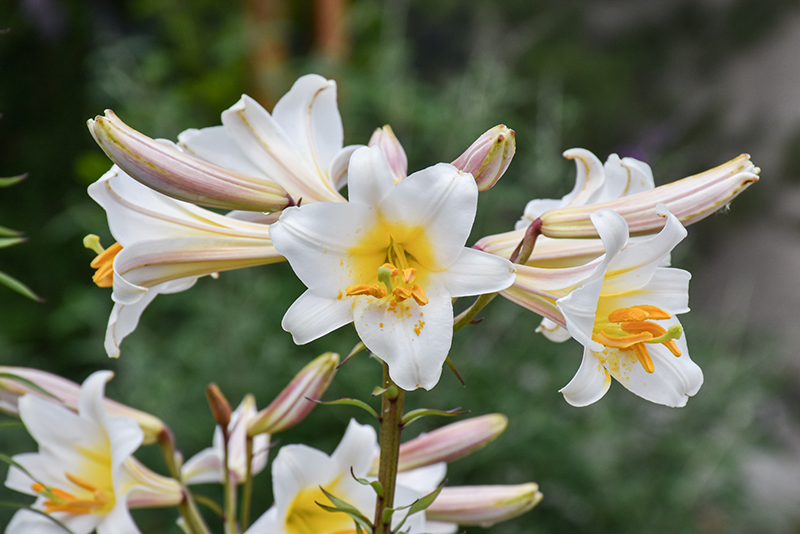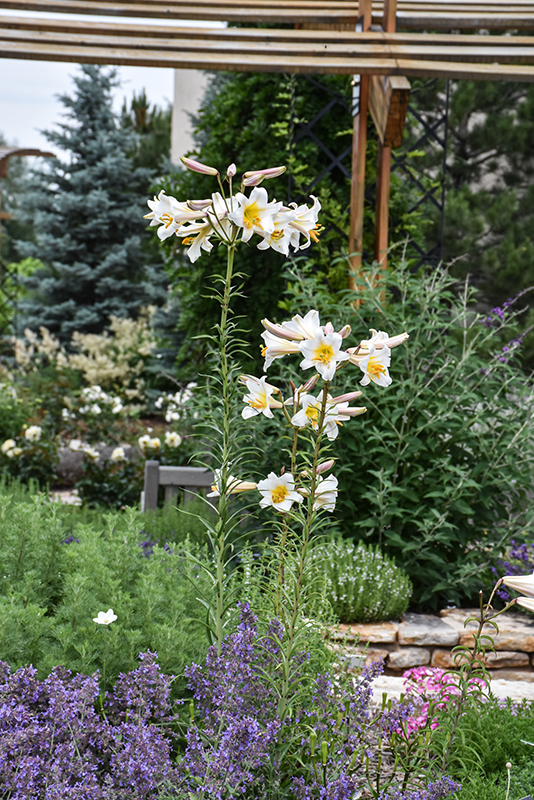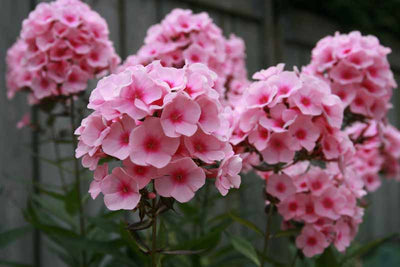Plant Library
Height: 5 feet
Spacing: 18 inches
Sunlight:
![]()
![]()
Hardiness Zone: 4a
Other Names: Royal Lily, Trumpet Lily, King's Lily
Group/Class: Trumpet
Description:
A midsummer bloomer producing tall, sturdy stems topped with highly fragrant, white trumpeted blooms with golden yellow throats and flushed with purple on the outside; long lasting flower display, great for borders, containers or fresh cut flower bouquets
Ornamental Features
Regal Lily features bold fragrant nodding white trumpet-shaped flowers with yellow throats and a lilac purple flare at the ends of the stems in mid summer. The flowers are excellent for cutting. Its narrow leaves remain green in color throughout the season.
Landscape Attributes
Regal Lily is an herbaceous perennial with a rigidly upright and towering form. Its medium texture blends into the garden, but can always be balanced by a couple of finer or coarser plants for an effective composition.
This plant will require occasional maintenance and upkeep, and should be cut back in late fall in preparation for winter. Gardeners should be aware of the following characteristic(s) that may warrant special consideration;
- Insects
- Disease
Regal Lily is recommended for the following landscape applications;
- Mass Planting
- General Garden Use
Planting & Growing
Regal Lily will grow to be about 4 feet tall at maturity, with a spread of 24 inches. When grown in masses or used as a bedding plant, individual plants should be spaced approximately 18 inches apart. It tends to be leggy, with a typical clearance of 1 foot from the ground, and should be underplanted with lower-growing perennials. The flower stalks can be weak and so it may require staking in exposed sites or excessively rich soils. It grows at a fast rate, and under ideal conditions can be expected to live for approximately 10 years. As an herbaceous perennial, this plant will usually die back to the crown each winter, and will regrow from the base each spring. Be careful not to disturb the crown in late winter when it may not be readily seen!
This plant does best in full sun to partial shade. It does best in average to evenly moist conditions, but will not tolerate standing water. This plant should not require much in the way of fertilizing once established, although it may appreciate a shot of general-purpose fertilizer from time to time early in the growing season. It is not particular as to soil type or pH. It is somewhat tolerant of urban pollution. This species is not originally from North America. It can be propagated by multiplication of the underground bulbs.






